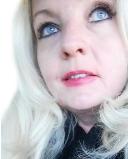Synesthesia
Synesthesia and Buddhism
Dr. William C. Bushell of Tibet House's Treasure Trove of Wisdom
Posted January 30, 2012
When I first began writing the synesthesia memoir, Tasting the Universe, I reached out to Tibet House in Manhattan to see if Buddhism had any wisdom to share on this trait. I had noticed, for example, that the imagery I see in my mind's eye in my novice meditation practice looks like synesthesia.
Further, I was aware of the study by Dr. Roger Walsh of the University of California at Irvine, Can Synesthesia Be Cultivated?, in which he found situational synesthesia occurred in meditation in non-synesthetes. This means that all people can and do experience synesthesia. And remarkably, it occurred with more frequency in Dr. Walsh's study the more adept one was at the practice.
I talked with the knowledgeable Executive Director Ganden Thurman, who believed there was a connection and put me in touch with Dr. William C. Bushell, director of his East-West Research and Science of Yoga Project, his staff medical anthropologist. Over time, Dr. Bushell and his colleagues found reference after reference connecting synesthesia to the highest states of Buddhist awareness.

Dr. William C. Bushell at Tibet House.
I share this treasure trove here:
• From a 13th Century statement by the Dogen on his enlightenment:
"Incredible, incredible,
Inanimate things proclaiming dharma is inconceivable,
It can't be known if the ears try to hear it,
But when the eyes hear it, then it can be known."
• "A seed is a highly condensed perceptual event. In its simplest absorbed form a seed is largely undifferentiated. A seed no longer pertains to a single sense modality like a visual form, but has condensed the six sense systems into one...But those specific forms recede to their undifferentiated state quickly." Daniel P. Brown, The Stages of Meditation in Mahamudram, 2006, Wisdom pp 205-207.
• "At this time [highest meditation state], there is a tremendous experience of forms, sounds, and lights-in brilliant sheets, rays, and spheres-occurring all at once and extending throughout the universe. All previous sights, sounds, and lights...amass as a single spontaneous vision of...the luminosity of appearance," Dzogchen Ponlop, Mind Beyond Death, 2008: p. 185 (Tibetan).
Dr. Bushell, a Fulbright scholar with 30 years in MIT-affiliated science, was emphatic about what some of this means. Regarding the statement by the Dogen, "I saw that it was clear that he was saying that synesthesia was a ‘requisite' dimension of the highest levels of enlightenment. Clearly that one could not reach enlightenment without synesthesia. And of course Dogen is one of the most major figures in Zen Buddhism.''
This is not to say that all synesthetes are enlightened of course - but it does seem to point to some sort of altered, heightened state of consciousness.
"There are certainly similarities between the descriptions of the meditators' perceptions and those of synesthetes," Dr. Bushell says. "This subject is greatly intriguing and drives my research, though I'm not ready in either case to say what these phenomena ultimately ‘are'-in the language of the philosophy of science, what the ontological or ‘ontic commitments' of them are-nor what their relationship to the particulate nature of reality is in contemporary physics. I and my colleagues are continuing our explorations in this area."
He says there are are obviously similarities and differences between meditative synesthesia and what the "average' synesthete experiences.
"I think that according to the data on the cognitive and affective properties of synethesia in most current studies it is in many ways essentially similar, particularly in terms of the highly positive and 'ineffable' affective qualities reported. And I think that the data suggests that if synesthetes meditate it will enhance, and possibly broaden and deepen their experience of their synesthesia. And the lesson from the meditative traditions seems to be that if they want to pursue the goal of 'enlightenment,' this process should involve a potentially fuller and richer synesthetic experience in meditation."
Dr. Bushell is currently involved in developing programs in meditation at Tibet House and Tibet House's extraordinary retreat and conference center near Woodstock, N.Y., the Menla Mountain Center -- which is presently opening a healing center and spa.
"We are in the process of developing programs in meditation there which will involve enhanced sensory-perceptual functioning, including those pertaining to healing and optimal functioning, and I could see these programs involving synesthesia in various ways, and possibly as a kind of ‘marker' of meditational advancement.'' He can be reached at wcbphd@att.net and see more on Menla at www.menlamountain.org.
Mahasukha Spa at Tibet House's Menla Mountain Retreat in Phoenicia, N.Y.
The first conference at Menla in 2006, "Longevity, Regeneration & Optimal Health: Integrating Eastern and Western Perspectives," was with the Dalai Lama, and brought together leading scientists from neuroscience and physiology. The subsequent book, with the same title, published in 2009 by one of the world's leading scientific publishers, the New York Academy of Sciences (Volume 1172 of their Annals series), mapped out pathways by which meditation can stimulate stem cells in adults, longevity genes, and telomerase, an enzyme that immortalizes cells (this discovery led to the 2009 Nobel Prize in Medicine to Elizabeth Blackburn, one of the Conference presenters and co-authors of the book). "Such cell-promoting factors could possibly be involved in the extended connectivity of the meditative/synesthetic brain; this is work we hope to further pursue at Menla," says Dr. Bushell.

Scientific and spiritual leaders, including Dr. Robert Thurman and His Holiness The Dalai Lama, meet at Menla.




